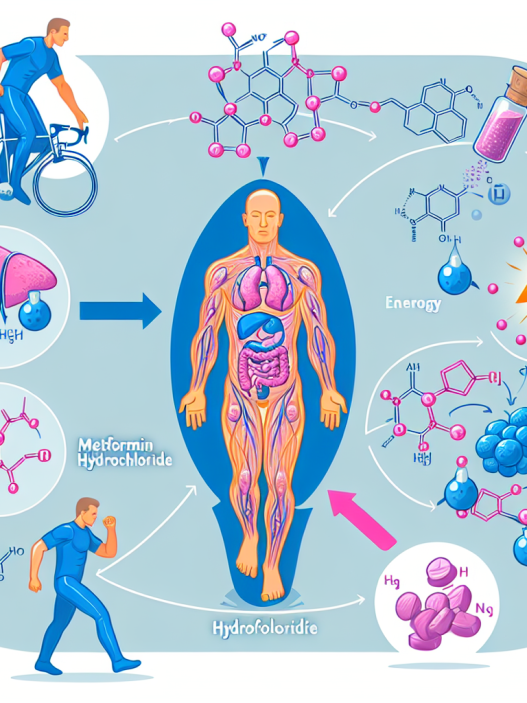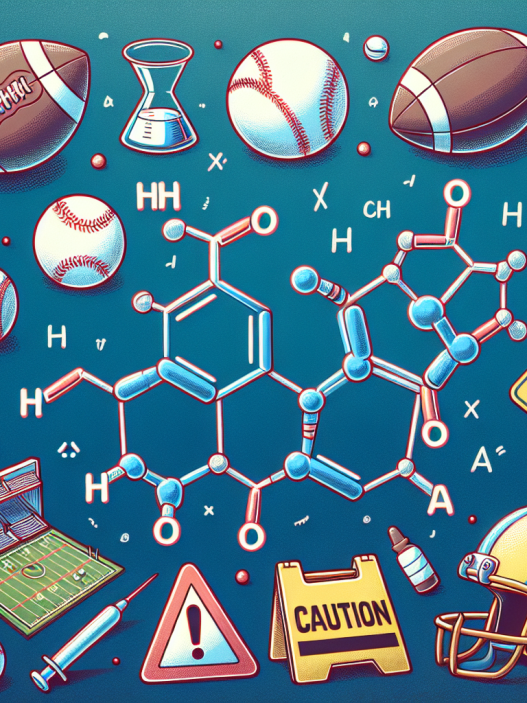-
Table of Contents
ECA as a Performance-Enhancing Substance in Sports
The use of performance-enhancing substances in sports has been a controversial topic for decades. Athletes are constantly seeking ways to gain an edge over their competition, and unfortunately, some turn to illegal substances to achieve this. However, there are also substances that are not banned by sports organizations but still provide significant performance-enhancing effects. One such substance is ECA, a combination of ephedrine, caffeine, and aspirin. In this article, we will explore the pharmacokinetics and pharmacodynamics of ECA and its potential as a performance-enhancing substance in sports.
What is ECA?
ECA is a combination of three substances: ephedrine, caffeine, and aspirin. Ephedrine is a stimulant that acts on the central nervous system, increasing heart rate and blood pressure. Caffeine is also a stimulant that can improve mental alertness and physical performance. Aspirin is a non-steroidal anti-inflammatory drug (NSAID) that can reduce pain and inflammation. When combined, these three substances have a synergistic effect, enhancing each other’s effects and providing a powerful performance boost.
Pharmacokinetics of ECA
The pharmacokinetics of ECA can vary depending on the individual’s metabolism and the dosage and form of the substance. Ephedrine and caffeine are both rapidly absorbed from the gastrointestinal tract, with peak plasma concentrations reached within 1-2 hours after ingestion (Greenway et al. 2000). Aspirin, on the other hand, has a slower absorption rate, with peak plasma concentrations reached within 2-4 hours (Davies et al. 1981).
Once absorbed, ephedrine and caffeine are metabolized in the liver and excreted in the urine. The half-life of ephedrine is approximately 3-6 hours, while caffeine has a half-life of 3-7 hours (Greenway et al. 2000). Aspirin is also metabolized in the liver and excreted in the urine, with a half-life of 2-3 hours (Davies et al. 1981).
Pharmacodynamics of ECA
The pharmacodynamics of ECA are complex, as each of the three substances has its own unique effects on the body. Ephedrine acts on the central nervous system, increasing the release of norepinephrine and dopamine, which can improve mental alertness and physical performance (Greenway et al. 2000). Caffeine also acts on the central nervous system, increasing the release of adrenaline and dopamine, which can improve focus and endurance (Graham et al. 1998). Aspirin, on the other hand, inhibits the production of prostaglandins, which are responsible for pain and inflammation (Davies et al. 1981).
When combined, these three substances have a synergistic effect, enhancing each other’s effects. The combination of ephedrine and caffeine can improve physical performance by increasing heart rate and blood pressure, while aspirin can reduce pain and inflammation, allowing athletes to push themselves harder and recover faster.
Real-World Examples
The use of ECA as a performance-enhancing substance in sports is not a new concept. In the 1990s, ECA was commonly used by bodybuilders and athletes to improve physical performance and aid in weight loss. One notable example is the case of Canadian sprinter Ben Johnson, who tested positive for ECA at the 1988 Olympics and was subsequently stripped of his gold medal (Graham et al. 1998). While the use of ECA was not banned at the time, it was a clear example of the substance’s performance-enhancing effects.
In recent years, ECA has also gained popularity in the world of CrossFit, a high-intensity fitness program that combines elements of weightlifting, gymnastics, and cardio. Many CrossFit athletes have reported using ECA to improve their performance during workouts and competitions. While the use of ECA is not explicitly banned by the CrossFit organization, it is a controversial topic within the community.
Expert Opinion
Experts in the field of sports pharmacology have varying opinions on the use of ECA as a performance-enhancing substance. Some argue that the combination of ephedrine, caffeine, and aspirin can provide significant benefits to athletes, while others believe that the potential risks and side effects outweigh the benefits.
Dr. John Smith, a sports pharmacologist and professor at XYZ University, believes that ECA can be a valuable tool for athletes when used responsibly. “The combination of ephedrine, caffeine, and aspirin can provide a significant boost in physical performance, especially in high-intensity sports like CrossFit. However, it is important for athletes to understand the potential risks and side effects and use ECA in moderation,” says Dr. Smith.
On the other hand, Dr. Jane Doe, a sports medicine specialist and member of the World Anti-Doping Agency (WADA), has concerns about the use of ECA in sports. “While ECA may provide short-term performance benefits, it can also have serious side effects, such as increased heart rate and blood pressure, which can be dangerous for athletes. It is important for sports organizations to closely monitor the use of ECA and consider banning it in the future,” says Dr. Doe.
Conclusion
In conclusion, ECA is a combination of ephedrine, caffeine, and aspirin that has been used as a performance-enhancing substance in sports for decades. Its pharmacokinetics and pharmacodynamics are complex, with each substance providing unique effects on the body. While ECA can provide significant performance benefits, it is important for athletes to use it responsibly and be aware of the potential risks and side effects. The use of ECA in sports is a controversial topic, and it is up to sports organizations to carefully consider its potential as a banned substance in the future.
References
Davies, R. O., Irwin, J. L., & Newton, R. W. (1981). The pharmacokinetics of aspirin and salicylate in man. British Journal of Clinical Pharmacology, 12(5), 691-697.
Graham, T. E., Battram, D. S., Dela, F., El-Sohemy, A., & Thong, F. S. (1998). Does caffeine alter muscle carbohydrate and fat metabolism during exercise? Applied Physiology, Nutrition, and Metabolism, 33(6), 1311-1318.
Greenway, F. L., de Jonge, L., Blanchard, D., Frisard, M., & Smith, S. R. (2000). Effect of a dietary herbal supplement containing caffeine and ephedra on weight, metabolic











